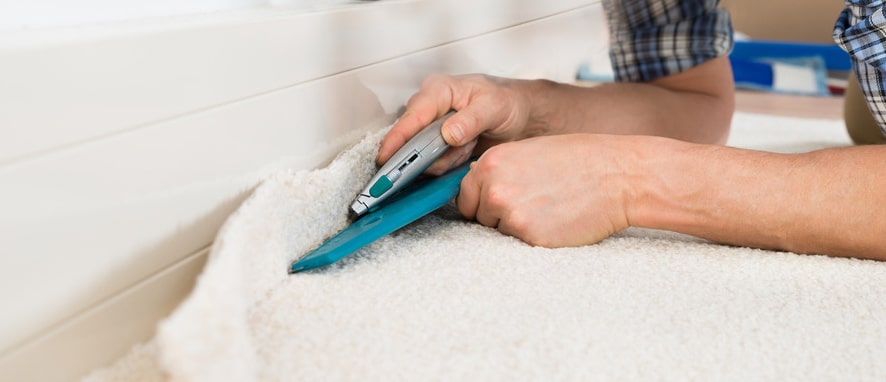Your carpet can start to smell for many reasons. It can begin as a new carpet smell, starting right after the carpet is put down because of fumes from the installation process. As the carpet gets later in its life, it can get a musty smell that becomes repulsive to a home owner. The reason your carpet smells is often drawn back to how old it is.
Most carpet installation projects end with the same smell filling the room for days, sometimes weeks, after the project is over. The repulsive smell isn’t even the worst news. Those smells signal the release of volatile organic compounds (VOCs) into the air. Here is what you need to know about VOCs, the best possible ways to limit them and other reasons your carpet begins to smell:
What are VOCs?
The VOCs are present in new carpet, carpet pads and adhesives, spreading through the air of your home after installation. They can include formaldehyde, acetaldehyde, benzene, toluene, perchloroethylene and others.
VOCs are the reason clients with new carpet can battle coughing, fatigue, headaches and shortness of breath, as well as eye, nose and throat irritation. They can contribute to immediate and long-term health issues for different people.
In carpets, 4-PC is the most frequently found VOC. It comes from the carpet backing, which is made of latex and used on approximately 95 percent of carpets. Over time, VOCs dilute and the strong smell goes away.
One alternative to dealing with VOCs comes in Green Label Plus carpet, which was developed by the Carpet and Rug Institute. This kind of carpet produces low emissions of VOCs and can help customers avoid the symptoms that come with inhaling VOCs.
Installation is Important to Limit New Carpet Smell
When you are having new carpet put in, ask the company installing it to unroll the carpet and allow it to air out in a clean, ventilated area for a few days before installation. Some carpet can even be tacked or nailed down, helping home owners avoid the new carpet smell that comes in the adhesives.
After the carpet is installed, be sure to ventilate the room as well as possible until the odor goes away. The Environmental Protection Agency advises 72 hours of ventilation after the carpet is installed. Open up windows in the room, turn fans to their highest setting and run the air conditioning to ventilate the room as much as possible. If possible, taking a quick vacation for a few days after the carpet is installed could also be a beneficial situation for the homeowner.
If carpet is being installed during a new construction or remodel, it’s best to wait as long as possible for the carpet to be put down. That keeps it from absorbing any more VOCs from paint or dirt tracked in that could be emitted later.
Other Reasons for Carpet Smell
If carpet isn’t maintained well throughout its lifespan, it can start to smell as it goes sustains normal wear and tear. The most common reason for a musty smell is water damage in carpet. Any water that gets on the carpet should be cleaned as soon as possible or it risks creating a long-term impact. Other problems can be dirt or even food that gets stuck in the carpet.
When you first notice the odor, it’s important to act and begin the cleaning process. You need to check the carpet and the pad beneath it to ensure the problem can be fixed.
Cleaning Can Help Limit Carpet Smell
After carpet is installed, keeping it clean throughout its lifespan is an important way to keep your home free from VOCs.
A household vacuum cleaner can limit some of the VOCs from becoming embedded in the carpet. The Carpet and Rug Institute invented a label that combines the standards of carpet cleaning effectiveness and indoor air quality into one platform, known as its Seal of Approval program. While deep dust and VOCs can get stuck in the carpet, vacuums with this seal are designed to clean out the harmful substances.
Besides vacuuming, here are some other tips to limit VOCs inside your home:
- Increase ventilation by opening windows on opposite sides of the house for 10 minutes each day.
- Get houseplants. Having plants inside of your home can help filter harmful chemicals from the air.
- Take your shoes off when inside the house. Shoes can track in harmful particles.
- Avoid using cleaning products that contain VOCs and could embed in the carpet
The Speedy Floor Removal team can help you avoid the frustration that comes with a floor replacement. We stand behind our advanced, dust-free technology so strongly that we’ll pay for your cleaning bill if there is any dust created. Feel free to request an estimate for our services.

